Toyota 4Runner Vs Honda Passport Comparison

There will be no off-roading in this SUV comparison.
Yes, the Toyota 4Runner and, to a lesser extent, the Honda Passport, are both known for their rugged nature. But what we have here are the on-road-oriented versions of these two mid-sized SUVs. Beyond a couple dirt roads and gravel parking lots, that’s precisely where we kept them—and that’s likely to be the case for a lot of owners.
The Passport had a rhinoplasty this year, with a snout like the Ridgeline and a soft-roading Trailsport trim. What we have here is a little different: a top-level Elite (Touring in Canada) with the new HPD package. Meanwhile, the 4Runner has been running around with minimal changes for the best part of a decade. This TRD Sport model is new for 2022 however, hanging some big wheels off the axles, in addition to a few other choice aesthetic changes. Managing editor Mike Schlee and I spent a week with these two brutes to see which we preferred.
Get a Quote on a New Toyota 4Runner or Honda PassportInterior and Cargo Space
4Runner: There’s no confusing the 4Runner for anything other than an old-school SUV. The dashboard design is all right angles, with two not-entirely-convincing metallic trim pieces framing all the central controls. What the 4Runner lacks in sophistication, it makes up for in plain ease-of-use. All the controls are clearly labelled and laid out; “like the manual switches and knobs in the 4Runner” read Mike’s notes. The door-top controls are a gentle reminder this isn’t your typical mall-crawler.
The TRD Sport wraps its seats in Toyota’s SofTex artificial leather, which is not only convincing, but easy to clean. You sit high and upright in the 4Runner, a clear view out over that hood scoop. Both Schlee and I are thrown off by the enormous steering wheel, which does nothing to shake the feeling that the 4Runner is larger than its measurements suggest. The seats are surprisingly supportive, in both rows, making it an easy ride to spend long trips in.
Despite feeling larger than the Passport, the 4Runner’s interior is cozier. Front headroom is a fine 39.3 inches (998 millimeters), and the second row is barely worse at 38.6 in (980 mm). Second-row legroom isn’t as bad as the paper suggests (32.9 in / 836 mm), but it’s certainly pinched instead of palatial, a la Passport. The Toyota gives up a few inches in shoulder and hip room, in both rows, too.
A short wheelbase lends the 4Runner a sizeable cargo space. We’re talking 47.2 cubic feet (1,337 L), and up to 89.7 cubes (2,540 L) with the second row folded away. It’s the old-school setup, with the seat cushions folding forward against the front seats, and the backs coming down. Not as convenient, no, but the 4Runner still has the handy retracting tailgate glass, not to mention a reasonably low load floor.
Passport: While the Passport’s interior design is certainly newer than that in the 4Runner, it’s not exactly more exciting. It’s standard mid-2010s Honda, a safe dashboard design with a whole lot of black. The climate controls stand out in a sea of piano black, and while some of the buttons are a little tiny, we appreciate Honda keeping a dedicated screen down there. Mike does wish there was still a tuning knob, however.
As the Passport’s main keeper for the week, I just couldn’t gel with its seats. They look good, and the leather is typical Honda quality, but on longer hauls, my lower back would start to ache after 90 minutes or so. I’m also not a fan of the foot-operated parking brake, which hangs down just enough to hit my shin every time I move my left leg around. There were no complaints from the numerous people who rode in the second row during the week.
That’s probably because the Passport is simply massive inside. The only measurement it gives up over the 4Runner is front legroom (a still vast 40.9 in / 1,039 mm versus 41.7 in / 1,059 mm), but the Honda out-points the Toyota in every other stat. Headroom? 39.5 inches (1,003 mm) up front, and an even 40.0 in (1,016 mm) out back. Rear legroom is a stretch-out-and-relax 39.6 inches (1,006 mm).
The Honda also has the Toyota beat for cargo space. There’s a cavernous 50.5 cu-ft (1,430 L) with the second row upright, and 100.7 cu-ft (2,852 L) with it down—one of the largest storage spaces out there. The wheel arches barely intrude on a wide, flat space, which is nice, though the Passport’s load lip is quite high.
SEE ALSO: 2022 Nissan Frontier First Drive Review: Into the Thick of ItBottom Line: The numbers don’t lie: the Honda is the more spacious ride. It has a more car-like feel inside too, which may or may not be to your tastes. The 4Runner isn’t without its advantages: we preferred the Toyota’s chunky physical controls and commanding driver position.
Tech and Features
4Runner: Toyota’s old Entune infotainment system lives in the central touchscreen. There are concessions to modernity—yay, Apple CarPlay and Android Auto support—but the screen is slow to respond and washes out in sunlight. We already know the 2023 model won’t be adopting the excellent new Toyota infotainment system, so we’ll have to wait for the full generation change, which we expect for 2024. The climate controls below it look dated, but we’re fine with that when the AC blows so cold, so quickly. Front passengers have heated seats, but no ventilation, and neither in the second row.
Beyond that, the 4Runner utilizes a small but useful info screen between its analog dials, displaying things like fuel economy, safety assist info, and more.
Safety assists include a pre-collision warning system, lane departure alert, auto high beams, and adaptive cruise control.
Passport: Like the 4Runner, the Passport houses an 8.0-inch touchscreen within its dashboard. It too uses wired phone mirroring. Honda’s native menu system is cleaner and easier to operate at a glance, not to mention quicker in its responses.
The Passport uses a larger digital screen in its instrument panel, housing not just secondary info but also the tachometer and speedometer. It’s easy to read in all lighting situations, and easy to navigate via the wheel-mounted controls. This being a top-level trim, the Passport features heated and ventilated front seats. Helpfully, these settings save, so no need to prod that button for a cooled backside on every start-up. Backseat riders have heated seats, as well.
On the safety front, the Passport comes standard with auto high beams, full-range adaptive cruise control, lane departure alert, automated emergency braking, blind-spot monitoring, and rear cross-traffic alert. We appreciate Honda’s blind-spot warnings being inside the cabin, so terrible weather doesn’t affect their visibility.
SEE ALSO: 2021 Jeep Gladiator EcoDiesel Review: No ApologiesBottom Line: Simply put, nobody is buying a 4Runner and expecting the latest tech. The Passport isn’t cutting-edge either, but it has the better infotainment system, a more robust safety suite, and more creature comforts. It wins here.
Powertrain, Driving Feel, and Fuel Economy
4Runner: People who don’t believe in time travel have yet to drive a 4Runner. Like it has for so long, this model runs a 4.0-liter V6 under that squared-off hood, good for a totally fine 270 horsepower and 278 pound-feet of torque.
Fine on paper, that is. Those healthy figures have to contend with a five-speed automatic transmission. With so few cogs in the box, each gear has to cover a wider spread, and that makes for gingerly acceleration. We didn’t mind it too much with the dirt-loving Trail model last year, but on the road, the 4Runner is just outmatched here.
On the plus side, it is quiet. The 4Runner’s highway manners are good, so long as the road is smooth. Introduce uneven surfaces and it jiggles, taking time to settle. Those big, blingy wheels clatter into potholes, robbed of the cushioning sidewall smaller items enjoy. The steering is vague, and the brake pedal soft (though it will haul the 4Runner down without issue). Those with body-on-frame driving experience will feel right at home, but folks wanting even a bit of sophistication will be left wanting.
Even though we didn’t take these two off-road, it’s important to mention a simple rolling stock change would dramatically improve both vehicle’s performance on the trails. And the 4Runner still comes with a selectable 4LO setting.
It’s also a thirsty beast. Officially, the 4Runner scores just 16 mpg city and 19 mpg highway, for a 17 mpg combined rating. (Canadian figures are 14.8, 12.5, and 13.8 L/100 km, respectively.) To its credit, it matched those ratings with us. Good thing it drinks 87.
Passport: Honda’s 3.5-liter V6 is a bit of a growler in the Passport. Stomp the throttle and there’s a distinctive burble from those twin exhaust tips. With important figures of 280 hp and 262 lb-ft, there’s not much between it and the 4Runner. But where the Toyota is lethargic, the Honda is eager to rev, and the four gear advantage in its nine-speed ‘box ensures it’s always got the right ratio for the job.
Neither of these two are quick, but the Honda is more assertive on the road, getting up to speed without fuss and staying there. Compared to most other unibody crossovers out there, it has a distinctly soft, traditional SUV feel to how it drives. But with an actual BOF SUV alongside it, the Passport is practically a car. Its steering is more direct, and it smooths bumps in a way the 4Runner simply can’t. The brake pedal is progressive and easy to modulate.
Migrate to the city, and the Passport is the easy choice. Its part-time AWD keeps the rear axle out of the power unless needed, which improves fuel economy. To that end, the Passport is rated at 19 mpg city and 24 mpg highway, scoring 21 mpg combined. (Canadian figures: 12.5, 9.8, 11.3 L/100 km). It did slightly better in our hands, though it did more highway miles than the official split.
Bottom Line: Do you enjoy the rough-and-tumble feel of an old body-on-frame SUV? Then you’ll like the 4Runner, even on the road. It just seems antithetical to us to buy an off-road-oriented SUV in its least off-road-oriented trim. On the road, the Passport is consistently easier to live with.
Styling
4Runner: The 4Runner has looked like this since 2014, when the current-gen SUV got a facelift. The TRD Sport makes a few choice cosmetic changes for a night on the town, consisting of body-colored extremities and grille accents, a hood scoop, and the twin-six-spoke, 20-inch alloy wheels. Mike prefers the “classic, rugged shape of the 4Runner,” and those two descriptors are bang-on. The general shape has stayed remarkably true to its roots, all these years.
Passport: The Passport is certainly the softer of the two, even with the bluff new schnoz for 2022. The HPD kit is certainly A Choice. The graphics and matte black plastic wheelarch extensions being writing checks we’re not entirely sure the Passport can cash, but they certainly set it apart. Similarly, the bronze 20-inch wheels are sure to divide opinions. I like ’em, but think they work better on the Ridgeline than this.
Bottom Line: You know where this is going: it’s a matter of taste, just as it ever was.
SEE ALSO: Jeep Wrangler vs Toyota 4Runner ComparisonPricing and Value
4Runner: The 4Runner starts from $39,320 in America, including destination charges. American buyers have the choice of RWD or 4WD, which bumps the cost up by $1,875. The TRD Sport arrives next in the model walk, and this 4WD model would ring in at $44,390.
There are options available in the US to drive that price upwards, but in Canada, it’s as-is, for an as-tested price of $55,670 CAD. In the Great White North, the lineup starts at the $49,440 CAD 4Runner Trail.
Passport: These two are remarkably close from the start, with the 2022 Passport lineup kicking off at $39,665 (including destination) for the EX-L. This top-shelf tester has everything thrown at it, plus the HPD Bronze package, which bumps the as-tested price to $50,520.
In Canada, the Passport Sport is the tongue-twisting anchor of the lineup, at $47,520 CAD including destination. The Touring is the top trim, with a list price of $54,120 CAD. With the HPD package and added-cost paint, this particular model runs $58,610 CAD.
SEE ALSO: Ford Bronco Sport vs Mazda CX-50: Which Rugged Compact SUV is Right for You?Bottom Line: The Passport is more expensive on either side of the border, but the gap is far smaller in Canada. It packs in more content, going a long way to justifying the added outlay.
Verdict: Toyota 4Runner vs Honda Passport
This was a tough one to pick. Not because there was a clear winner, but because neither of these vehicles really won us over.
The 4Runner is an old cathode-ray tube TV: big, heavy, and boxy, a low-res relic in an HD world. There’s a certain nostalgic warmth to those scanlines though, and in something like the go-anywhere TRD Pro or rustic Trail, we see the appeal. But the 4Runner TRD Sport feels sluggish and awkward on the road. If you’re doing the body-on-frame thing, you’ve gotta lean into it.
Nothing makes the Passport feel like the car-based crossover it is like sticking it against the 4Runner. It’s smoother, easier to live with, and better pampers its occupants. But it’s also lacking in character (snarly V6 aside), and pricier.
Of these two, your choice will depend as much on personal preference as hard figures. The real two-row SUV winner? The Jeep Grand Cherokee.
Become an AutoGuide insider. Get the latest from the automotive world first by subscribing to our newsletter here.

Kyle began his automotive obsession before he even started school, courtesy of a remote control Porsche and various LEGO sets. He later studied advertising and graphic design at Humber College, which led him to writing about cars (both real and digital). He is now a proud member of the Automobile Journalists Association of Canada (AJAC), where he was the Journalist of the Year runner-up for 2021.
More by Kyle Patrick



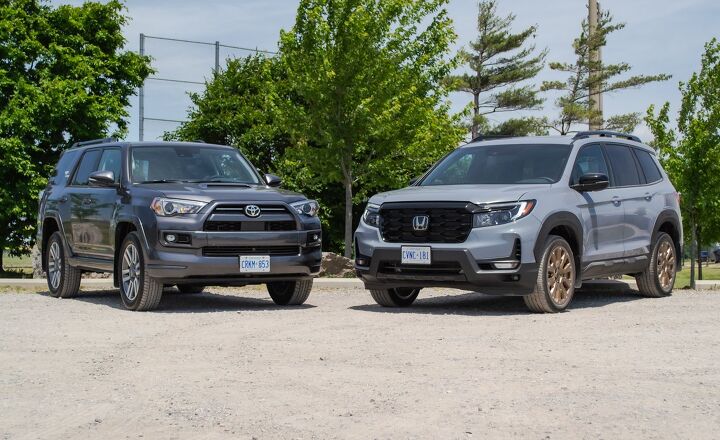































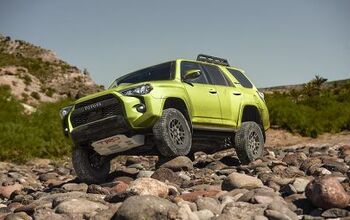
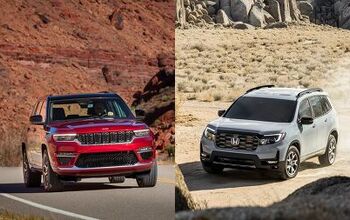
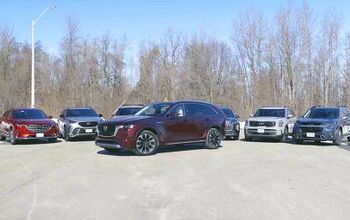
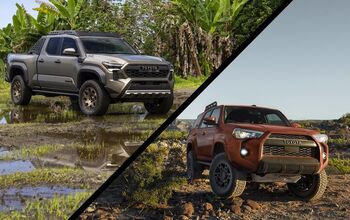

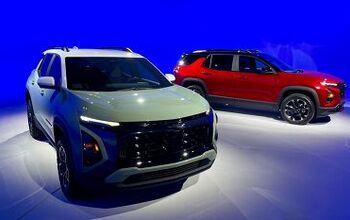



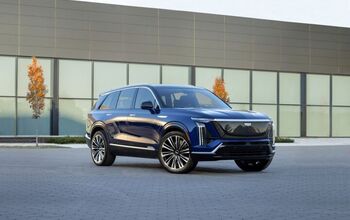

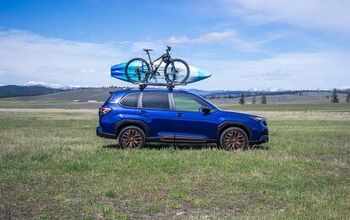

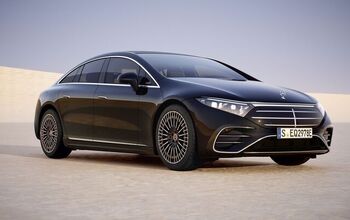
Comments
Join the conversation
All the whining about the mention of the GC ? I came to this article in search of an alternative to the Grand Cherokee. I may wait for the new 4Runner in 2025 (I drove an FJ for 10 years) and the Hodna is incredibly dull - more a competitor for the Highlander. I don't need something to get to the supermarket. What I get out of this is that if I can't wait for the new 4Runner, it's the Grand Cherokee for me.
Honda and Toyota are major league competitors. Jeep is the minor league